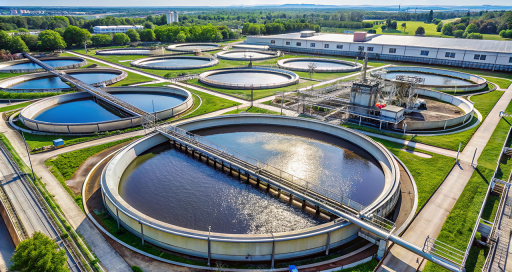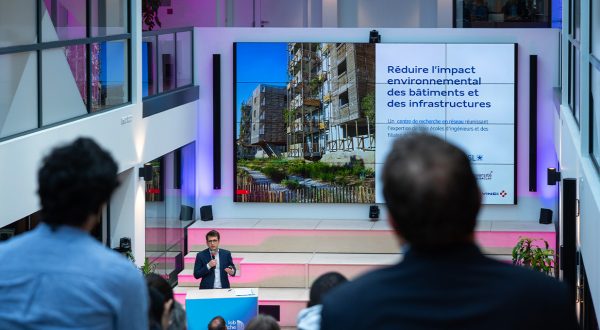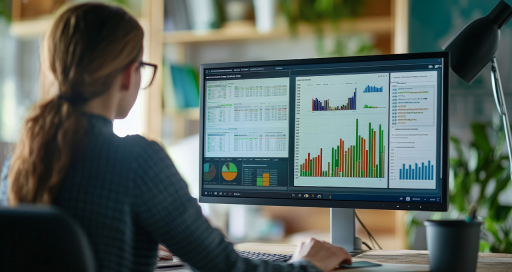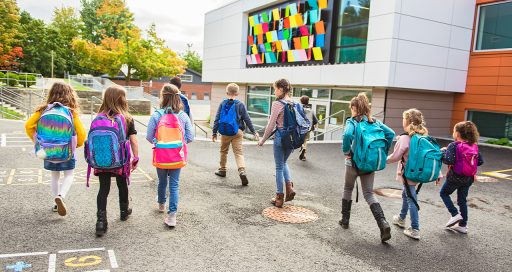The circular economy is increasingly part of the economic conversation and is inspiring numerous initiatives. But it needs to be more convincing if it is to enter the mainstream. To explain and convince is the credo of Nicolas Dumas, Environmental Project Manager at VINCI Energies Building Solutions and Valentine Salomon, Innovation Market Manager at Actemium.

How is the circular economy viewed as part of VINCI Energies business activities?
Nicolas Dumas: In the business world in general, the circular economy has long been viewed in terms of regulatory compliance. We initially saw a flurry of initiatives relating to waste collection and recycling. Then, little by little, the spectrum of thinking and solutions widened to include repair, refurbishment, extending the life cycle of materials, sharing capacity and reusing technical equipment.
Today, the regulatory view is more pertinent than ever, and circularity has gained in economic legitimacy. Businesses are increasingly using it explicitly as a lever for value and competitiveness. And that is clearly the case at VINCI Energies.
What are the levers for boosting the circular economy?
Nicolas Dumas: In the building sector in France, the circular economy will inevitably gain ground, if only to adhere to the increasingly stringent RE2020 environmental regulation roadmap. The construction-sector circular economy has also taken an important stride forward with the PEMD (products, equipment, materials and waste) diagnostic, which has been mandatory since 1 July 2023. This applies to major demolition and renovation projects, and goes further than the waste diagnostic by encouraging the identification of opportunities to recover materials and to prioritise prevention and reuse.
And where is industry on this?
Valentine Salomon: Progress is being made step by step, more slowly than in other areas of the VINCI environmental policy that VINCI Energies is signed up to. For example, in the “Taking climate action” category, VINCI Energies has made great strides thanks to its CO2 emissions reduction actions. Nonetheless, there is significant potential, with numerous solutions that are simple and quick to implement, particularly in relation to circularity loops.
And what about in building?
Nicolas Dumas: At VINCI Energies Building Solutions, we are seeing more and more initiatives transform into products and services. This commercial scaling-up is playing a key role in accelerating streams that were already well established, such as the reuse of cables with the Circable solution. Our business unit RESO Services offers a similar solution for cable trays, ventilation ducts and sanitary ware.
“Businesses are increasingly using circularity explicitly as a lever for value and competitiveness.” (Nicolas Dumas)
This transition to the circular economy can also trigger the emergence of new streams, such as for retrofitting fan coil units and air-handling units, stand-alone emergency lighting units, luminaires, power points and glass partitions. To shape these streams and assemble them into a global solution to galvanise large-scale reuse is the prime objective of our new business unit, Backin.
As these circular models develop, they integrate increasingly naturally with our customers’ energy efficiency and decarbonisation plans.
Can you give some examples of planned or existing applications?
Valentine Salomon: In the area of energy efficiency, we could mention input/output flow auditing and numerous water reclamation projects.
We approached farmers and communities as well as manufacturers about producing renewable gas from the methanisation of local waste and of sludge from wastewater treatment plants.
In terms of industrial maintenance, a range of materials, including valves and taps, are being recovered, refurbished, and then resold or reinstalled. In preventive maintenance, AI is helping us prolong the life of equipment.
Circularity is also manifesting in industrial transfer – an item of equipment no longer required by a customer can be upgraded and installed for another customer. The most difficult part here is overcoming the reluctance of customers to pay new prices or even more for second-hand equipment. Another appealing and effective avenue involves embedding circularity commitments in business deals and performance contracts. The various “as-a-service” models are also excellent vehicles for the circular economy.
How can we speed things up?
Valentine Salomon: I’m always trying to explain that the circular economy can be found everywhere, that it’s very real, something tangible, that ultimately comes down to common sense. But I also know from experience that even the vocabulary of the circular economy can scare people off, because the meanings are often unclear, and it can be difficult to express what lies behind the words.
“The various ‘as-a-service’ models are also excellent vehicles for the circular economy.” (Valentine Salomon)
For me, in my educational and demonstration work, I like to talk about the six R’s: recycle, reuse, refuse, reduce, rethink and repair. These words immediately mean something.
Nicolas Dumas: It’s essential to raise awareness within operational teams and purchasing networks. Our teams, especially our purchasers, should be familiar – and ideally fully conversant – with environmental assessment tools like LCA (life cycle analysis).
Effectively, we need to constantly explain, demonstrate and champion initiatives and best practices across the board. I recently welcomed a group of around 20 colleagues from other European countries and Morocco for three days in Paris. The intention of this “learning expedition” was to introduce them to a catalogue of solutions designed by and implemented in our French business units. Subsequently, employees from these countries formed a Green Sourcing International club. In terms of innovation, nothing beats practical demonstration and experience sharing.
11/14/2025




